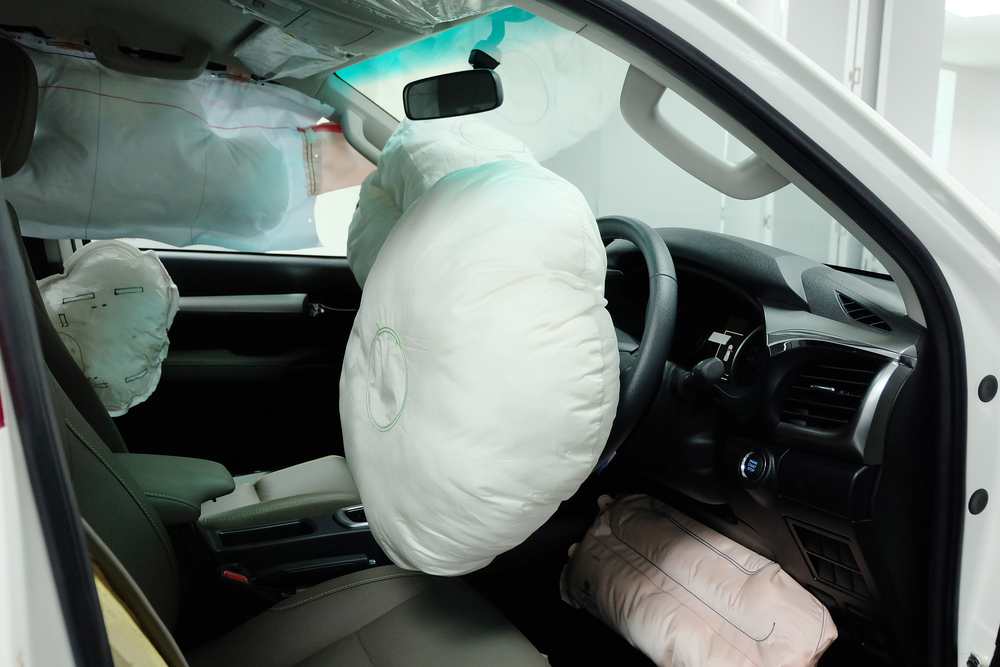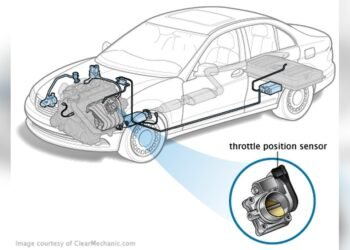Yes, a car can be fixed after airbags deploy by replacing the deployed airbags and repairing any other damaged components. When a car’s airbags deploy in a collision, it may leave the vehicle in need of repairs.
While deploying airbags can cause damage to various components, it is possible to fix the car and restore it to its pre-accident condition. However, it is important to have a professional inspect the car thoroughly to assess the extent of the damage and determine the necessary repairs.
We will explore the process of fixing a car after airbags deploy, including replacing the deployed airbags and addressing any additional damages that may have occurred. Let’s delve into the details of how to efficiently restore a vehicle following airbag deployment.
Effects Of Airbag Deployment
When airbags deploy after a collision, they serve a crucial role in protecting drivers and passengers from the impact. However, many car owners may wonder about the possible effects of airbag deployment on their vehicle. In this article, we will explore the immediate impact of airbag deployment and the potential damage it can cause to your car.
Immediate Impact
Following a collision, airbag deployment can have a significant immediate impact on the occupants of a vehicle. The force generated by the rapid inflation of the airbags cushions and prevents severe injuries by absorbing the energy from the collision. This life-saving feature reduces the risk of occupants hitting the hard surfaces of the vehicle’s interior or being ejected from the vehicle, thus minimizing the potential for more severe injuries.
Potential Damage To Vehicle
While airbags play a vital role in safeguarding passengers, they can also cause damage to the vehicle itself. The deployment process involves the release of a substantial amount of gas, which can create a loud noise and potentially result in the windshield cracking or other cosmetic damages to the interior of the car. Additionally, the force exerted by the airbags may cause the steering wheel, dashboard, or other components to shift or break upon impact, requiring repairs or replacement.
Moreover, the actual deployment of the airbags can lead to damage to the surrounding parts of the vehicle. For instance, the force can result in the deployment of the side curtain airbags, which may cause tears or holes in the headliner or side upholstery. The electronic systems responsible for controlling the airbags may also incur damage during deployment, requiring assessment and repair for proper functionality.

Credit: www.toyotaofclermont.com
Assessing The Condition Of The Car
Assessing the condition of a car involves determining if it can be fixed after airbags deploy. Analyzing the damage and consulting professionals will help decide the feasibility of repair.
When it comes to a car accident, one of the most important aspects to consider is the condition of the vehicle itself. After airbags deploy, it is crucial to thoroughly assess the car to ensure its safety and functionality. In this section, we will discuss two key areas to focus on when inspecting a car following airbag deployment: Inspecting the Airbags and Checking for Structural Damage.
Inspecting The Airbags
After an airbag has been deployed, it is essential to assess its performance and evaluate its condition. Here are a few key points to keep in mind when inspecting the airbags:
- Check for visible damage to the airbag cover, such as tears or punctures.
- Ensure that the airbag deployed correctly and fully, providing the necessary cushioning and protection.
- Verify that the airbag’s inflation system functioned properly and that there are no signs of malfunction.
- Be aware of any warning lights or error codes related to the airbag system that may be illuminated on the dashboard.
Checking For Structural Damage
Aside from the airbags, it is crucial to examine the car for any structural damage that may have occurred as a result of the accident. Here are some important steps to take when checking for structural damage:
- Visually inspect the exterior of the vehicle for any visible signs of damage, such as dents, cracks, or misalignment.
- Look for any irregularities in the car’s frame or body panels that could indicate structural issues.
- Listen for any unusual sounds or vibrations while driving, as these could be signs of internal damage.
- If possible, take the car for a test drive to assess its handling and performance. Pay attention to any changes in steering, braking, or suspension.
- Consider having a professional mechanic or technician perform a comprehensive inspection to ensure that all components are functioning correctly.
By thoroughly inspecting the airbags and checking for structural damage, you can determine the safety and drivability of a car after airbag deployment. Remember, any concerns should always be addressed by a qualified professional who can properly assess and repair the vehicle.
Repairing The Airbag System
Repairing the airbag system in a car that has deployed its airbags is a complex task best left to trained professionals. Expert technicians can diagnose and fix any issues caused by the deployment, ensuring that the airbags are in optimal condition for future use.
Replacing Deployed Airbags
When the airbags in your car deploy due to an accident or a malfunction, it is crucial to have them replaced as soon as possible. The deployed airbags cannot be reset or reinstalled, so the only option is to replace them with new ones.
Replacing deployed airbags involves a careful process that should be done by a trained professional. The technician will first inspect the damage to the airbag system, including the sensors, wiring, and inflators. They will then remove the damaged airbags and replace them with OEM (Original Equipment Manufacturer) or high-quality aftermarket airbags.
It’s important to note that the replacement process may involve additional components, such as the airbag module, which stores data about the airbag deployment. This module may also need to be replaced or reprogrammed to ensure proper functioning of the new airbags.
Resetting The Airbag Control Module
The Airbag Control Module (ACM) is a crucial part of the airbag system as it controls the deployment of the airbags in an event of a collision. In some cases, when the airbags deploy, the ACM may store crash data and trigger the airbag warning light on the dashboard.
- To reset the ACM, you can try the following steps:
- 1. Disconnect the car battery to ensure safety.
- 2. Locate the ACM, which is usually found under the driver’s or passenger’s seat.
- 3. Remove the ACM and take note of any visible damage.
- 4. Use a specialized tool or software to reset the ACM.
- 5. Once reset, reinstall the ACM and reconnect the car battery.
If the airbag warning light continues to appear after attempting to reset the ACM, it is recommended to consult a professional technician. They have the necessary tools and knowledge to diagnose and fix any issues related to the airbag control system.
Addressing Structural Damage
When your car’s airbags deploy, the impact can cause significant structural damage. In order to ensure the safety and integrity of your vehicle, it is crucial to address this damage promptly and effectively. This section will discuss two key aspects of addressing structural damage, namely assessing frame and body damage and repairing or replacing damaged components.
Assessing Frame And Body Damage
After an airbag deployment, one of the first steps is to assess the extent of frame and body damage. This assessment involves evaluating the structural elements of your car, including the frame, pillars, roof, and panels. The purpose of this evaluation is to determine if there are any visible signs of bending, buckling, or deformation that may compromise the vehicle’s safety.
To properly assess the frame and body damage, it is recommended to consult with a qualified mechanic or collision repair specialist. These professionals have the expertise and equipment necessary to conduct a thorough inspection. They will examine the vehicle’s structural components, using specialized tools to measure any deviations from the manufacturer’s specifications.
During the assessment process, the mechanic will document the damage and provide you with a detailed report. This report will outline the areas of concern and recommend the necessary repairs or replacements. By accurately assessing the frame and body damage, you can take appropriate action to restore your vehicle’s structural integrity.
Repairing Or Replacing Damaged Components
Once the frame and body damage has been assessed, the next step is to determine the best course of action for repairing or replacing the damaged components. The specific approach will depend on the severity of the damage and the recommendations provided by the specialist.
In some cases, minor frame and body damage can be resolved through repair techniques such as pulling and straightening. These methods involve using hydraulic equipment to realign the affected areas and restore their original shape. Specialized tools and techniques are employed to ensure an accurate and precise restoration process.
However, in more severe cases, it may be necessary to replace certain components entirely. This can include sections of the frame, panels, or other structural elements that have suffered irreparable damage. By replacing these components, the structural integrity of the vehicle can be restored to its pre-accident condition.
It is essential to entrust the repair or replacement of damaged components to a reputable and experienced repair facility. They will employ skilled technicians who understand the intricacies of structural repairs and will use high-quality parts to ensure a durable and safe restoration.
In conclusion, addressing structural damage is a crucial step in fixing a car after airbags deploy. Assessing the frame and body damage accurately and taking appropriate action to repair or replace damaged components will help restore the vehicle’s structural integrity and ensure its safety on the road.
Testing And Ensuring Safety
After your car’s airbags have deployed, it’s crucial to have proper testing and ensure safety. Skilled technicians can fix the car, providing peace of mind and restoring its functionality.
Verifying Proper Airbag Function
Before fixing a car after airbags deploy, it is essential to ensure that the airbags are functioning correctly. Verifying proper airbag function requires a series of tests to ensure they are ready to protect in case of another accident.
- Start by checking the airbag indicator light on the dashboard. If the light is not illuminated or remains on after starting the vehicle, it may indicate a problem with the airbag system.
- Utilize a diagnostic tool designed specifically for airbag systems to scan for any error codes.
- Inspect the airbag modules, connections, and wiring for any visible damage or signs of wear. Replace any damaged components accordingly.
- Perform a sensor test to ensure that the crash sensors are working properly. These sensors are responsible for detecting the impact and triggering the airbags to deploy.
- Once all tests have been conducted and any necessary repairs or replacements have been made, clear any error codes from the diagnostic tool and retest the airbag system to ensure it is functioning correctly.
Performing A Thorough Safety Inspection
Fixing a car after airbags deploy involves more than just repairing the airbag system. It is crucial to perform a thorough safety inspection to identify any additional damage that may have occurred during the deployment. This inspection will help prevent any potential safety issues in the future and ensure the vehicle is safe to drive.
Here is a checklist of areas to inspect:
- Exterior: Check for any visible damage to the body panels, headlights, taillights, and mirrors.
- Interior: Inspect the dashboard, steering wheel, seats, and seat belts for any signs of damage.
- Electrical Systems: Test all electrical components, including lights, turn signals, horn, and wipers, to make sure they are functioning correctly.
- Suspension and Alignment: Check the alignment and suspension components to ensure they have not been affected by the impact.
- Brakes and Tires: Inspect the brake system and tires for any damage that may have occurred during the deployment.
- Engine and Transmission: Scan for any error codes and perform a general inspection of the engine and transmission to ensure they are functioning properly.
By performing a thorough safety inspection, you can address any issues that may compromise the vehicle’s safety and ensure it is safe for both you and your passengers.

Credit: www.andymohrcollision.com

Credit: www.carfax.com
Frequently Asked Questions For Can You Fix A Car After Airbags Deploy
Can You Fix A Car After Airbags Deploy?
Yes, a car can be fixed after the airbags deploy. However, it depends on the extent of the damage caused by the deployment.
Conclusion
To sum up, repairing a car after airbags deploy is crucial for ensuring the vehicle’s safety and proper functioning. Though it may be an involved and costly process, it is essential to restore the car to its pre-accident condition, addressing any damage inflicted upon the airbags, sensors, and related components.
Entrusting this task to an experienced professional ensures that your vehicle is roadworthy and secure for future travels.















